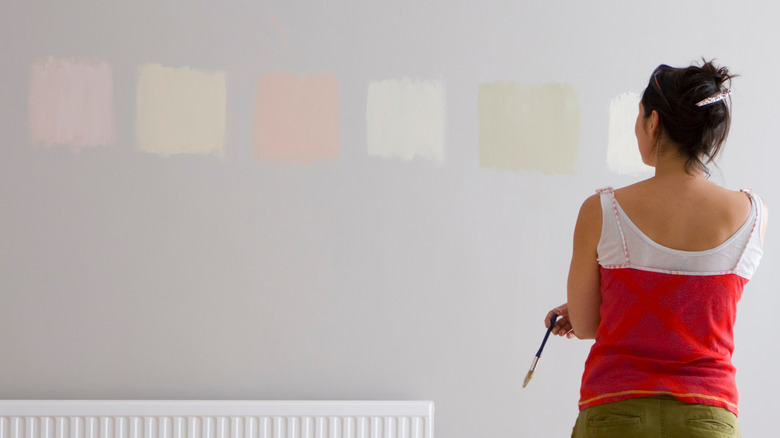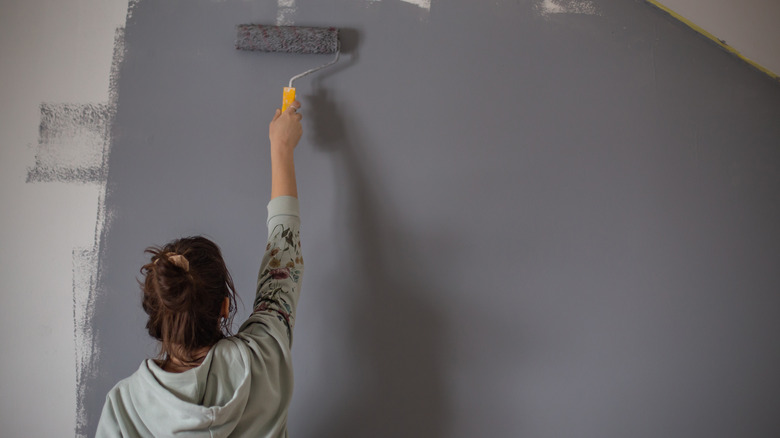The Truth About Sample Paint Has The Internet In A Tizzy
While painting your house is one of the most time-consuming home improvement projects, it's also an exciting activity. Typically, when going to the store to track down the perfect shade of paint, many buy a small can of affordable sample paint to test it out. Then, after making sure it's the right color, some may begin covering their wall with it. Once they've run out of paint, they may return to the store to buy more sample paint to cover the rest of the surface. However, there's just one problem with this — sample paint is not actually paint. This can be a difficult truth to accept if you've already covered a surface with this product.
A good number of people seem to be oblivious to the fact that sample paint is really just that — a sample. While color samples do give you true color, the formulas aren't suited for actually covering a wall or another surface. Real paint contains binding agents like resins which make sure that it stays on the wall, while samples are supposed to have a temporary stay on your wall until you confirm the color you want before purchasing the real thing. However, if you've already used a sample on your walls, you don't need to panic. You can fix that problem easily, but it requires a trip back to the hardware store.
Cover the sample with real paint
Luckily, mistakenly using a sample instead of actual paint in your home is not a death sentence to your walls. However, it could be if you leave it as is. Because sample paints lack the binding agents required to stay put and have a perfect finish, they tend to be watery, non-cohesive, and unsuitable for a paint job. Also, they're pretty permanent, as there is no easy way to remove them after application. The only solution on the table is to cover them with real paint.
Further, to avoid being a cautionary tale the next time you paint a wall, skip testing sample paint on your walls by applying them to a different surface instead such as poster board or canvas. Just remember to wait for the paint to dry properly before making your final observations. You can test the paint color before committing to it by covering something with the sample and then tacking it onto your wall or whatever surface you want to color. Leave it there for at least a day to dry, then check if it's truly the color you want. If you've already purchased a can of sample paint, you can either dispose of it after letting it harden or use it for lesser jobs like a fun arts and crafts project.

